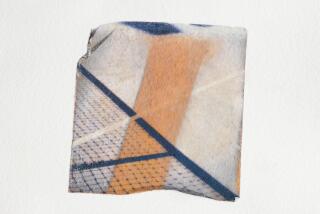Kinks Aplenty in the U.S. Open Series
- Share via
From a distance, the package looks complete and neat. The closer you get, it’s a different story.
Welcome to the U.S. Open series.
For all the bells and whistles, the recently announced series, while ambitious, needs work. And the U.S. Tennis Assn.’s salesmanship of the 10-tournament, six-week series between Wimbledon and the U.S. Open needs to be dialed down a few notches.
Historic? Landmark?
Perhaps these words should be left where they belong. Like describing the introduction of the tiebreaker and advent of Open tennis. That’s groundbreaking.
Despite the work-in-progress feel, this should be called a step in the right direction, pulling sparring factions together. The idea has precedent in Australia. There has been the Summer of Seven, a television-driven concept including the Australian Open and lead-up tournaments.
Starting in July, the North American series leading into the U.S. Open will consist of 10 hard-court tournaments, opening with the Mercedes-Benz Cup at UCLA. It will include events in Carson, Indianapolis, Toronto and Washington, and has been designed to give the sport a more consistent television platform. To heighten player and fan interest, bonus prize money goes to the top three finishers in the series, based on U.S. Open performance.
But two issues loom. One affects Europe and the other hits Southern California. The most successful women’s tournament on the West Coast, the Acura Classic in Carlsbad, is not a part of the new package, which could hurt the credibility and future influence of the series.
If the Carlsbad event were a small tournament, it would not be a major concern. But Honda came through with a big financial commitment when the event moved to Tier I status this year, offering $1.3 million in prize money.
The tournament has a strong track record and has made a quantum leap forward from its humble beginnings when it started as a $50,000 event at Morley Field in San Diego in 1984. Tournament co-owner Raquel Giscafre said that during the inaugural event the players shared changing facilities with homeless people and there was a late-night shooting nearby.
Now, players relish the low-key atmosphere at La Costa. Venus and Serena Williams are scheduled to appear this year. And all of the top 10 players have committed to play the tournament, which starts July 26.
Arlen Kantarian of the USTA, the principal architect of the series, deferred questions about Carlsbad’s absence to its owners.
“We are the only Tier I tournament in the summer in the United States,” Giscafre said in a recent interview. “We’re just waiting to be offered a fair offer from the USTA.”
She was doubtful that there could be an agreement for this year. Giscafre declined to specify what the USTA had offered but said the series made more sense for tournaments that did not have a strong television contract. Her event has that as well as strong ties and a multi-year contract with its primary sponsor.
“Certainly the USTA made us an offer to be part of their program which was worse than the offer they made to other Tier II tournaments,” she said Wednesday. “We’re a Tier I, meaning the investment in the tournament is huge. We have to pay the tour millions of dollars to upgrade to Tier I from Tier II.
“The concept is a good concept. But we need to be treated fairly. We have invested in the tour. We need to be treated even better, not worse, than other Tier II tournaments. They have to look at it as a unique tournament, not the same as Stanford or L.A. [Carson].”
A USTA spokesperson said Wednesday that “there have been a number of offers” to the Acura tournament but declined to get into the specifics of terms offered to the various events in the series.
The other area of concern came on the men’s side, with European tournament directors taking issue with the series. Patrice Dominguez, who represents the Monte Carlo event and also sits on the ATP’s board of directors, recently spoke about protecting the European clay-court events in July.
“We think that the creation of this series could be a threat for the tournaments in Europe in July,” he told the news agency Agence France-Presse. “ ... We don’t want a tour inside a tour. The last point is we do not want the creation of a bonus [system] inside the tour necessarily attached to a new ranking.”
In the aftermath of his recent remarks, the ATP’s board of directors had a conference call last week to discuss the issue, and voted to support “the concept of collaboration,” according to a tour spokesperson. Additionally, there is a scheduled meeting with USTA officials next week in the United States in an effort to reassure the disgruntled faction that the North American hard-court tour is not a threat.
*
Passings
The business lost a major influence last week. Esteemed journalist and tennis historian John Parsons of the Daily Telegraph died April 26 in Miami.
Tim Henman, who visited Parsons in the hospital in Miami, told the Telegraph, a British newspaper, that Parsons, 66, was the “grandfather of tennis.” His influence was not confined to British tennis but was of a global nature as well.
More to Read
Go beyond the scoreboard
Get the latest on L.A.'s teams in the daily Sports Report newsletter.
You may occasionally receive promotional content from the Los Angeles Times.











